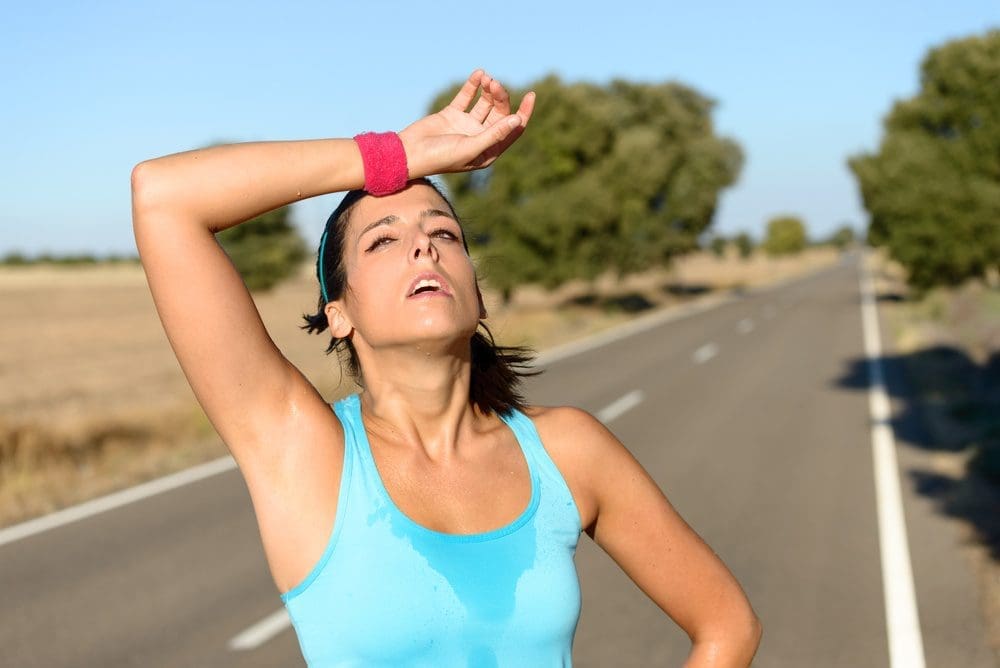
As the average temperatures around the world continue to rise and each year we seem to see higher temperatures earlier and earlier in the season, aiming for that ‘summer-ready body’ can become more of a challenge.
While there is nothing stopping you from getting in your full work-out routine outdoors or using gym equipment once the temperatures start to climb and the pre-summer sun is out in full strength. There are key things to remember to ensure you don’t unintentionally push yourself over the limit and cause injury, lasting damage, or illness.
How Is Exercising In The Heat Different?
Working out when the air temperature surrounding you is high can result in extra stress placed on your body that causes an increase in your core body temperature. This is worse when the humidity levels are also high as your body can’t effectively evaporate sweat from your skin, which would normally cool you down.
Once your core body temperature starts to climb without slowing or dropping, dangerous things start happening inside your body to your vital organs – you essentially begin to ‘cook’ which damages your organs and can lead to your body shutting down. Once you’ve reached this stage, it is commonly referred to as ‘heatstroke’ and is no light matter, heatstroke can result in brain damage and in some cases, death. Heat exhaustion is sometimes referred to as the first step of heatstroke, however, exhaustion can occur from exercise in regular temperatures and isn’t necessarily an indication of heatstroke. Instead, you should keep an eye out for the following symptoms that can show you have a heat-related illness.

Recognising Heat Stroke
Once your core body temperature begins to rise, you may first start to experience;
- Cramps – although commonly experienced when exercising without stretching or a proper warm-up, heat cramps, muscle pains or muscle spasms can be the first sign something is wrong
- A feeling of lightheadedness which could lead to fainting – often a sign of exhaustion, dizziness, lightheadedness or fainting soon after exercise or when going from sitting to standing shouldn’t be ignored
- Nausea and vomiting – once your core body temperature hits 40°C (104°F) things have gone very wrong and you are likely to start feeling nauseous or begin throwing up, you will likely also feel weak, might have a headache and have cold, clammy skin. This is often considered the heat exhaustion stage and without treatment can quickly lead to heatstroke.
Heatstroke is official once your core body temperature peaks above 40°C (104°F) and requires immediate medical attention. Someone suffering from heatstroke is likely to be confused, irritable, be showing the signs of heat exhaustion and may also be experiencing visual problems and irregular heart rhythms. Heatstroke is life-threatening and if anyone is showing these symptoms, they need to be taken to a hospital straight away for treatment to prevent brain damage, organ failure, and death.
Is Hydrating Enough?
Keeping well hydrated when the temperatures are higher outside is a regularly repeated message across the world but just getting enough water isn’t enough to prevent you from getting heatstroke and too much hydration can also be detrimental to your health.
Some experts recommend working out your sweat rate, which involves weighing yourself nude and dry before a workout and then after your workout, drying off and weighing yourself again – the difference in fluid ounces determines how much fluid you’ve lost and how much you need to replace.
Salt is also a key part of ensuring your body stays healthy on hotter days, as you exercise in the heat, over time your salt levels begin to drop and it’s key that it is replenished with the occasional salty snack.
What To Do If You Have Heatstroke
If you or someone around you begins to show signs of heat exhaustion, it’s important to immediately get out of the heat and begin cooling the body down. Get some cool air blowing on the person showing symptoms and apply cool water to as much as their skin as possible, sitting in a cool or icy bath is beneficial and a fast way to cool down. Ideally, you should have someone available to continually monitor the condition, however, internal temperatures can only give true figures when measured rectally and medical equipment such as rectal thermometers are not a standard piece of kit.
If the condition does not change after 20 minutes or the symptoms continue to get worse quickly, get yourself or the individual showing symptoms to the nearest medical centre for treatment.
Keeping fit is a routine that many of us enjoy but it’s important that we don’t push ourselves beyond our body’s capabilities and look ourselves carefully, especially in hot weather, to ensure we can enjoy gym equipment, exercise, and sports in the future to the fullest.

Be the first to comment